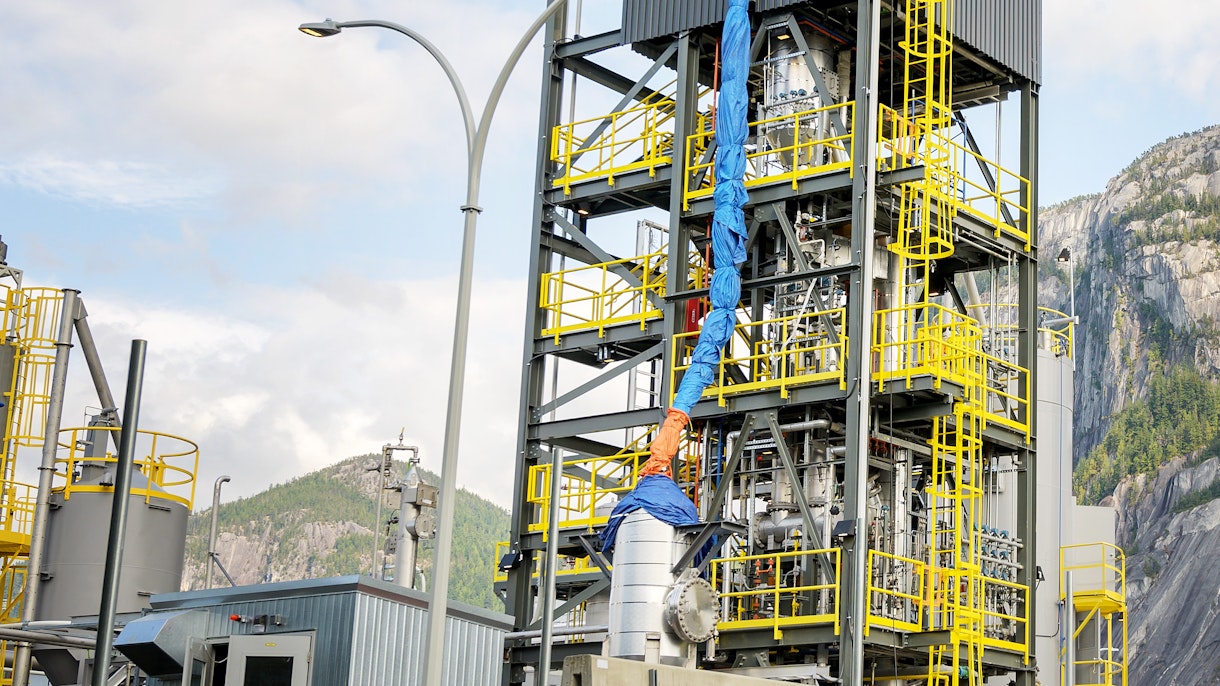IEA holds expert workshop on scaling up direct air capture and storage through carbon markets
News

The International Energy Agency last week brought together government, industry and civil society representatives to discuss the role of direct air capture and storage (DACS) in meeting climate objectives, and the challenges and opportunities involved in further deployment.
The hybrid event, a thematic workshop of the IEA’s Committee on Energy Research and Technology (CERT), took place on 31 May and was attended by around 60 in-person participants from around 15 countries including the United States, Canada and Japan, as well as around 30 online attendees. Attendees comprised senior officials from government, including the delegates of IEA’s CERT, industry representatives involved in direct air capture and international carbon markets, and civil society.
Directly reducing emissions in all sectors that produce and consume energy is the primary route to net zero, but carbon dioxide removal (CDR) technologies such as DACS are also needed to meet the Paris Agreement’s goal of limiting global temperature rise to 1.5 °C. In the IEA Net Zero Emissions by 2050 (NZE) Scenario, DACS is scaled up to capture almost 60 million tonnes of CO2 per year (MtCO2/year) by 2030, a significant step-up from the less than 0.01 MtCO2/year currently captured. This level of deployment is achievable but will require more large-scale demonstration plants to refine the technology and reduce costs.
A number of governments are providing policy and funding support to scale up DACS but, as a nascent and energy-intensive technology, it is currently very expensive. One way to increase demand for DACS, and thereby make it more cost-competitive, is through carbon markets that recognise the removed and stored CO2 in the form of carbon credits that can be sold to companies and governments through voluntary carbon markets or Article 6 of the Paris Agreement. However, putting this into practice will require a lot of technical work to develop credible and reliable monitoring, reporting and verification systems and baseline methodologies; robust accounting frameworks; and a revision of the current additionality criteria used in carbon markets to issue carbon credits to DACS-specific circumstances.
These issues framed the discussion at the workshop, with two sessions considering the government and industry perspectives on accelerating DACS deployment through carbon markets. The first session focused on government policy design to incentivise DACS deployment, including the role of carbon markets, and the second on the challenges and opportunities for industry in leveraging carbon markets to accelerate DACS scale-up.
Voluntary carbon markets are currently fuelling most DACS projects, with only a handful of domestic carbon markets integrating carbon removal regulations today, and none currently recognising DACS. Technical work to integrate DACS in carbon markets is progressing, but barriers remain. In this context, discussions at the workshop highlighted several possible solutions that can be broadly categorised around three key priorities for scaling up DACS through international carbon markets:
- Assess the role of CDR, including DACS, in net zero strategies: While CDR is expected to play an essential role in meeting net zero targets, its deployment at a national and regional level will vary considerably. Countries will take different pathways to net zero and the ultimate balance of remaining emissions vs removals will depend on a range of factors, from the opportunities and challenges for direct mitigation in major sectors to the cost and availability of natural sinks (nature-based CDR) or technology-based CDR approaches.
- Build an array of complementary policy instruments to support DAC deployment: while carbon markets could provide an extra revenue stream to de-risk the operation of DACS plants, carbon markets alone are unlikely to spur the level of investment needed to scale up DACS to align with the IEA’s NZE Scenario. Therefore, governments should consider – at least initially – the deployment of a portfolio of policy instruments including subsidies, tax credits, and/or advanced market commitments, with a view to phasing these down over time as DAC technologies reach a competitive price point relative to other climate mitigation technologies.
- Develop internationally agreed approaches to DAC certification and accounting: The development of robust and transparent international certification and accounting methods for DAC will be important to facilitate its inclusion in regulated carbon markets and to provide confidence in the emission reductions (including through CO2 use) and removals associated with DAC.